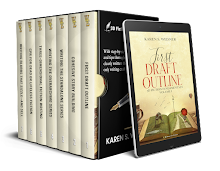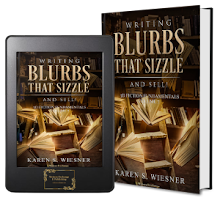Recently I've gotten into the emergent subgenre of "cozy fantasy" -- for example, LEGENDS AND LATTES and its prequel, BOOKSHOPS AND BONEDUST, by Travis Baldree. (Both titles actually have ampersands in place of the word "and," but for some reason this software doesn't like that.) Unsure how to define it specifically enough, I'm still in the "I know it when I see it" phase. So here's an essay that covers the topic in lucid detail:
What Is Cozy Fantasy?This blogger's summary definition: "Cozy Fantasy can be defined as a fantasy book with a slice-of-life ambience wrapped up in a story that is healing or comforting, that centers deeply on its worldbuilding and characters, but in the end has a hopeful narrative." Because of the content of the novels I've read so far, I tend to think of cozy fantasy as mainly dealing with quirky shops in small towns; however, as the author of the blog mentions, it doesn't always take place in that kind of setting.
Here's the Goodreads list of cozy fantasies. Because it's compiled from readers' classifications of books, though, it should be taken with a grain if not a shaker of salt. For instance, T. Kingfisher's SWORDHEART and Heather Fawcett's Emily Wilde novels definitely do NOT fit into the category:
Cozy Fantasy on GoodreadsThese general remarks lead up to a review of Sarah Beth Durst's THE ENCHANTED GREENHOUSE, which I love, linked to her earlier novel THE SPELLSHOP, which I also love. By the way, the plots of these books certainly don't feature "low stakes," mistakenly cited by some readers as a defining trait of cozy fantasy.
While THE ENCHANTED GREENHOUSE is part prequel to and part spinoff from THE SPELLSHOP, the two novels can be read independently. Aside from a shared setting, they’re connected by a sentient spider plant, a major secondary character in THE SPELLSHOP, whose creation triggers the events at the beginning of THE ENCHANTED GREENHOUSE. The two heroines, both librarians, reverse-mirror each other in personality. The protagonist of THE SPELLSHOP is an introvert perfectly content to live in her corner of the library without speaking to anyone except the spider plant for weeks at a time. Upon returning to her home island, she shrinks from meeting people and tries in vain to discourage her obtrusively friendly nearest neighbor. Terlu in THE ENCHANTED GREENHOUSE, on the other hand, expected that as a librarian she would meet scholars and other patrons every day, helping them find the perfect books for their needs. Instead, she works in unwelcome isolation. In her loneliness, she casts a spell to bestow sentience on the spider plant, violating the harsh law against magical activity by non-sorcerers, just to have someone to talk to.
She ends up alone on an island with a handsome but antisocial gardener who communicates mainly by grunts and shrugs. The story begins with the trial that condemns her to transformation into a wooden statue as an example to other would-be lawbreakers. Six years later, she reverts to human form, awakening amid a snow-covered landscape on the aforesaid island. The only inhabitant, Yarrow, the caretaker for a complex of enchanted greenhouses, petitioned the capital of the Empire for a sorcerer to stop the gradual degradation of the magic that keeps the greenhouses functional. Instead, he received Terlu along with instructions on how to break her punitive spell. From him, she learns the sorcerer who ruled the island died some time ago, and ever since, greenhouses have failed at regular intervals. Glass cracks, and the spells that maintain their internal environments stop working. The structures house a fascinating variety of plant life, both magical and mundane, in a wide array of micro-climates. Terlu also meets miniature dragons, a winged cat, a talking rosebush, and a roomful of other sentient, ambulatory plants (after she wakes them). One feature of this world I especially like is its diverse population of multiple human races, humanoids, and human-animal hybrids (although in this book we don’t see much of them until the island gets re-settled at the end). Terlu, for instance, has lavender skin, and nobody thinks anything of it. It’s also a delightful novelty to see a “pleasingly plump” heroine with a face resembling a cheerful chipmunk’s.
The initially grumpy, withdrawn Yarrow nevertheless helps her as much as possible and invites her to stay in his own cottage, even though he clearly thinks she talks too much. As they work together researching the books and notes left by the dead sorcerer, who became increasingly paranoid with age, to figure out the cause and cure for the failing magic, Yarrow unbends toward Terlu. They become friends who soon share, naturally, numerous moments of awkward romantic attraction. Their growing bond is endearing and believable. It’s also credible that Terlu fears the potential consequences of meddling with magic at a far more serious level than her original transgression (just as the heroine of THE SPELLSHOP fears getting caught at her necessary but illegal spellcasting). She’s torn between her dread of being discovered by imperial investigators and her longing to save the greenhouses and their precious plants. Of course, we know what she’ll choose, but the suspense is genuine, as is the difficulty of finding out what went wrong and how to fix it. Meanwhile, Yarrow struggles to face his fraught relationship with his extended family who left him alone on the island –- even if the sorcerer gave them little choice –- while Terlu questions whether she dares to let her own family know she’s alive. All those factors, along with the heartwarming conclusion, made this a story that I hated to see end. Durst has created a fantasy world many readers will want to linger in. Next July a third book, called SEA OF CHARMS, will be published (a whole year to wait!).
Margaret L. Carter
Please explore love among the monsters at Carter's Crypt.




































No comments:
Post a Comment